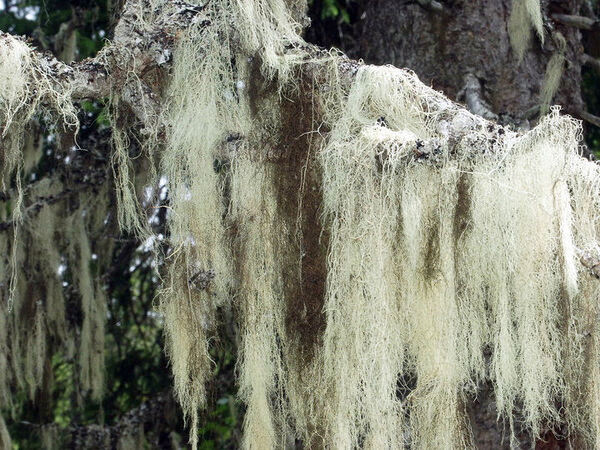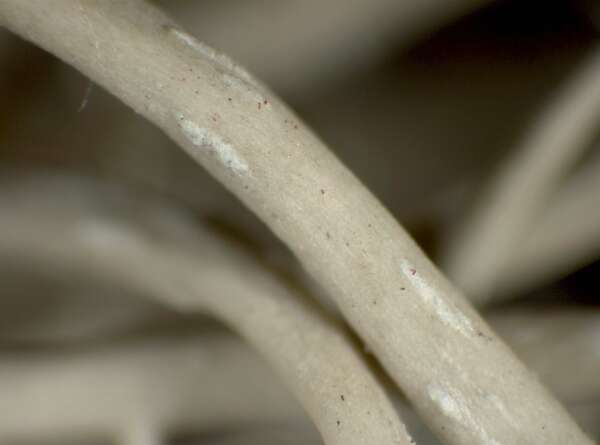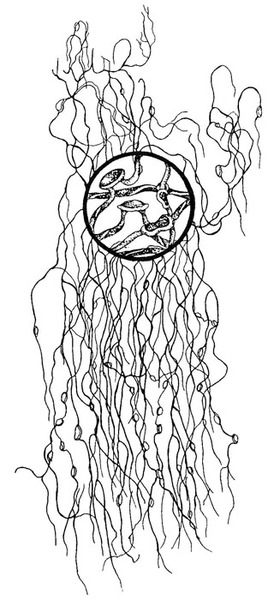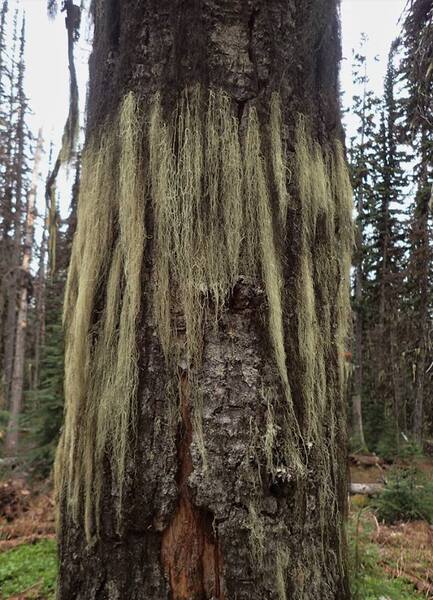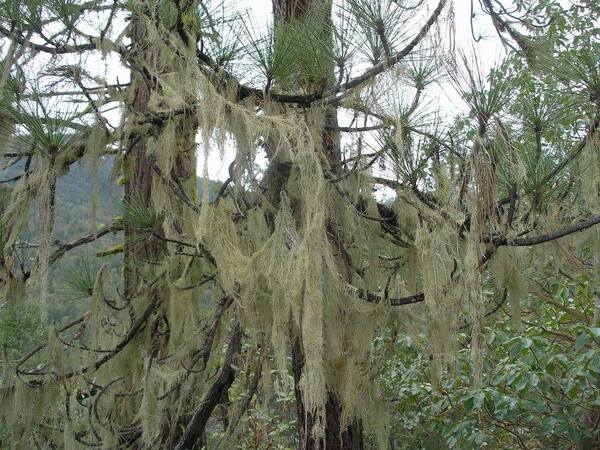Alectoria sarmentosa (Ach.) Ach.
Lichenogr. Univ.: 595, 1810. Basionym: Lichen sarmentosus Ach. in Liljeblad - Utkast Svensk Flora: 427, 1792.
Synonyms: Alectoria cincinnata (Fr.) Lynge; Alectoria luteola Mont. ex De Not.; Alectoria sarmentosa var. cincinnata (Fr.) Nyl.; Alectoria sarmentosa var. genuina Flagey; Alectoria sarmentosa var. sorediosa (K.G.W. Lång ex Räsänen) Du Rietz; Alectoria sarmentosa var. tortilis Sambo
Distribution: N - Frl, Ven (Caniglia & al. 1999, Nascimbene & Caniglia 2002c, 2003c, Nascimbene & al. 2006e), TAA (Nascimbene & al. 2007b, 2014, 2022, Nascimbene 2013, 2014, Nimis & al. 2015), Lomb (Dalle Vedove & al. 2004), Piem (Isocrono & al. 2004), VA (Borlandelli & al. 1996, Piervittori & Isocrono 1997, 1999, Isocrono & al. 2008), Emil (Fariselli & al. 2020). C - Tosc, Umb (Panfili 2000, Ravera & al. 2006), Laz (Herb. Ravera 4729), Abr (Ravera 2002b). S - Camp (Aprile & al. 2002, 2003b), Bas (Puntillo & al. 2012), Cal (Puntillo 1996), Si.
Description: Thallus fruticose, filamentous, pendent, flaccid except at base, 20-40(-80) cm long, attached by a basal holdfast, branching mainly isotomic-dichotomously; branches terete, often becoming compressed and angular-foveolate towards the base and at axils, 0.5-2.0(-2.5) mm thick, greenish grey to yellowish green; pseudocyphellae white, abundant, conspicuous, raised, elongate-fusiform to tuberculate, clearly delimited, usually c. 1 mm long. Apothecia rare, lecanorine, mostly lateral. Asci 2-3(-4)-spored, clavate, the K/I+ blue tholus penetrated by a faintly amyloid apical cushion with parallel or diverging flanks, the wall K/I-, surrounded by a K/I+ blue outer layer, Lecanora-type. Ascospores 1-celled, hyaline but finally often brownish, ellipsoid, 23-40(-48) x 12-25 µm. Pycnidia mainly apical, up to c. 2 mm diam., black, shining. Photobiont chlorococcoid. Spot tests: cortex K-, C-, KC+ pale yellow, P-, UV-; medulla K-, C-, KC+ red or KC-, P-, UV+ ice-blue. Chemistry: cortex with usnic acid; medulla usually with alectoronic acid (major), squamatic and a-collatolic acids (all accessory).Note: a cool-temperate to boreal-montane, probably circumpolar species found on branches, more rarely on trunks of (mainly) conifers in forests with frequent fog, with optimum in the montane belt. More common in the past, it is presently confined to upland areas and is certainly declining, being very sensitive to air pollution and forest management. It is included in the Italian red list of epiphytic lichens as “Near-threatened” (Nascimbene & al. 2013c).
Growth form: Fruticose filamentous
Substrata: bark
Photobiont: green algae other than Trentepohlia
Reproductive strategy: mainly asexual, by thallus fragmentation
Most common in areas with a humid-warm climate (e.g. most of Tyrrenian Italy)
Commonnes-rarity: (info)
Alpine belt: absent
Subalpine belt: extremely rare
Oromediterranean belt: absent
Montane belt: very rare
Submediterranean belt: absent
Padanian area: absent
Humid submediterranean belt: absent
Humid mediterranean belt: absent
Dry mediterranean belt: absent

Predictive model
Herbarium samples
Growth form: Fruticose filamentous
Substrata: bark
Photobiont: green algae other than Trentepohlia
Reproductive strategy: mainly asexual, by thallus fragmentation
Most common in areas with a humid-warm climate (e.g. most of Tyrrenian Italy)
Commonnes-rarity: (info)
Alpine belt: absent
Subalpine belt: extremely rare
Oromediterranean belt: absent
Montane belt: very rare
Submediterranean belt: absent
Padanian area: absent
Humid submediterranean belt: absent
Humid mediterranean belt: absent
Dry mediterranean belt: absent

Predictive model
| Herbarium samples |
 Index Fungorum
Index Fungorum
 GBIF
GBIF
